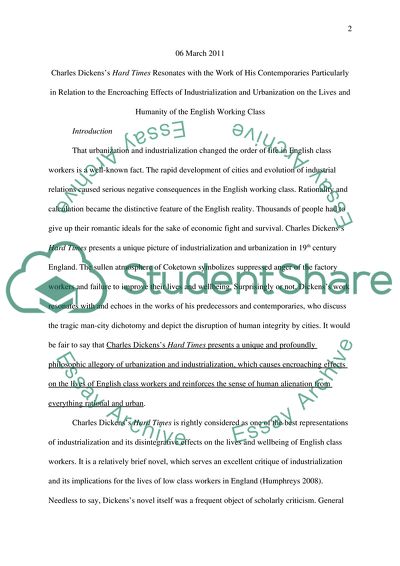Cite this document
(Charles Dickenss Hard Times Literature review Example | Topics and Well Written Essays - 2250 words - 1, n.d.)
Charles Dickenss Hard Times Literature review Example | Topics and Well Written Essays - 2250 words - 1. https://studentshare.org/history/1749168-dickens-hard-times-resonates-with-the-work-of-his-contemporaries-particulary-in-relation-to-the-effects-on-the-enroaching-effects-of-industrialisation-and-urbanisation-on-the-lives-and-humanity-of-the-english-working-class-discuss
Charles Dickenss Hard Times Literature review Example | Topics and Well Written Essays - 2250 words - 1. https://studentshare.org/history/1749168-dickens-hard-times-resonates-with-the-work-of-his-contemporaries-particulary-in-relation-to-the-effects-on-the-enroaching-effects-of-industrialisation-and-urbanisation-on-the-lives-and-humanity-of-the-english-working-class-discuss
(Charles Dickenss Hard Times Literature Review Example | Topics and Well Written Essays - 2250 Words - 1)
Charles Dickenss Hard Times Literature Review Example | Topics and Well Written Essays - 2250 Words - 1. https://studentshare.org/history/1749168-dickens-hard-times-resonates-with-the-work-of-his-contemporaries-particulary-in-relation-to-the-effects-on-the-enroaching-effects-of-industrialisation-and-urbanisation-on-the-lives-and-humanity-of-the-english-working-class-discuss.
Charles Dickenss Hard Times Literature Review Example | Topics and Well Written Essays - 2250 Words - 1. https://studentshare.org/history/1749168-dickens-hard-times-resonates-with-the-work-of-his-contemporaries-particulary-in-relation-to-the-effects-on-the-enroaching-effects-of-industrialisation-and-urbanisation-on-the-lives-and-humanity-of-the-english-working-class-discuss.
“Charles Dickenss Hard Times Literature Review Example | Topics and Well Written Essays - 2250 Words - 1”. https://studentshare.org/history/1749168-dickens-hard-times-resonates-with-the-work-of-his-contemporaries-particulary-in-relation-to-the-effects-on-the-enroaching-effects-of-industrialisation-and-urbanisation-on-the-lives-and-humanity-of-the-english-working-class-discuss.


